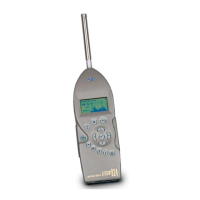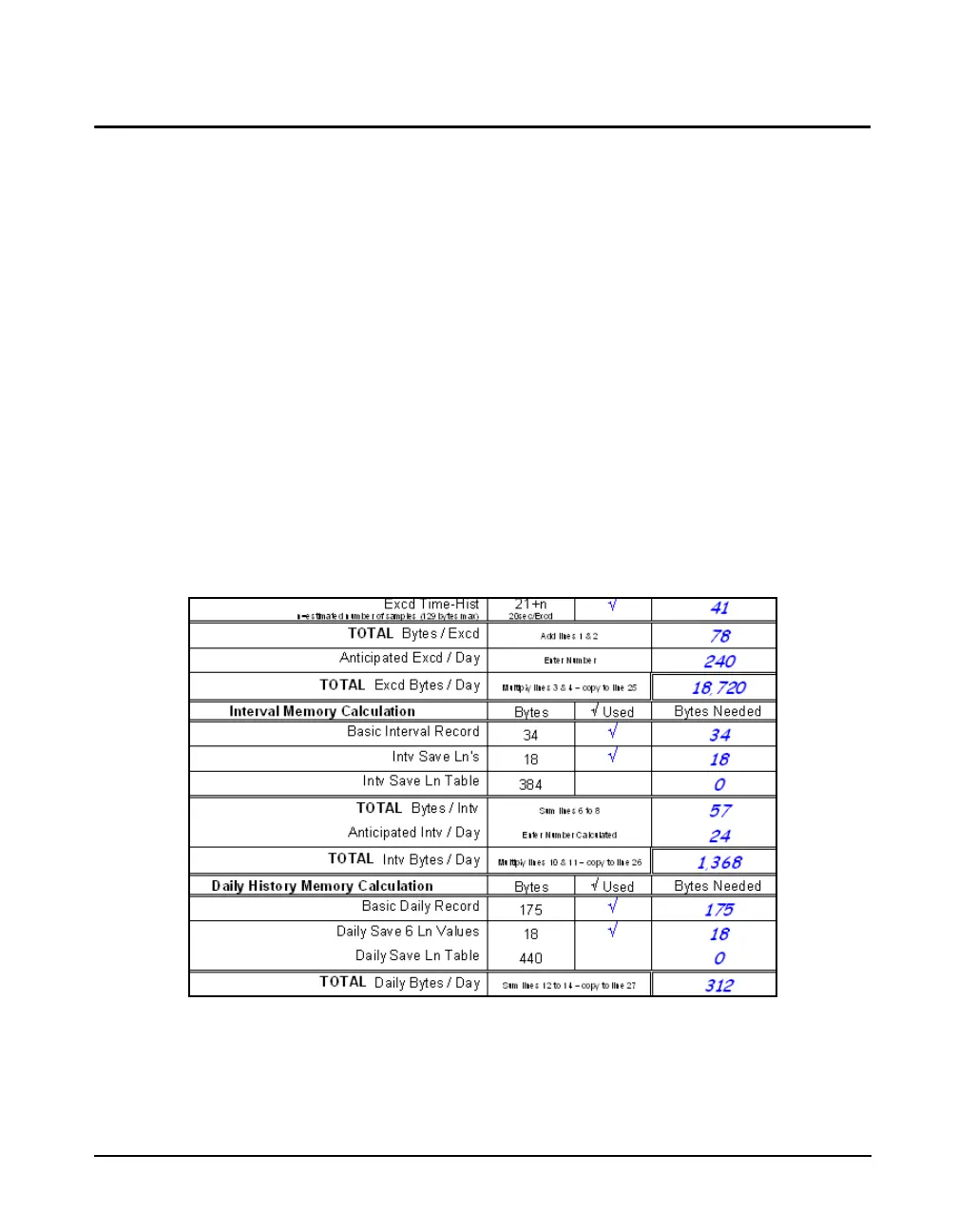9/29/09 E-3
Estimating Memory Usage:
The easiest way to estimate the memory usage is to work on a time basis such as one day. Estimate
how many Exceedances will occur in a normal day. Calculate the number of Interval, Time History,
Daily, Run Log and Calibration Check records that will be performed in a day. Based on the options
chosen calculate the number of bytes required for each record type and multiply by the number of
records expected per day, sum these values and this is the number of bytes required per day. Divide
this value into the amount of available memory in the 824 (see Tools | Memory display, generally
about two million) and this is the number of days that can be gathered.
As an example, let's assume a job requires monitoring the noise made by trucks coming and going
from a factory near a residential area. From an initial site survey it is discovered that all trucks are over
65dBA at the boundary of the road and residential property and that there seems to be a truck passing
the site every 3 minutes. The occupants of the residential area want to know how many trucks are
traveling this road and why they are disturbed by more than others. The Exceedance Function will be
used to detect events over 65dBA and there are 20 events per hour expected or 240 per day (20 events/
hour time 12 hours/day) assuming that the plant operations will be reduced during the night. Each
event is expected to last 20 seconds and the Excd T.H rate is 1 sample per second. Statistics based on
hourly intervals and a one minute time history are desired to identify disturbance patterns. The time
history will give the A weight Leq normally and we will also get the A Lmax, C Leq and C Lmax. The
following completed worksheet shows the calculations for this example:

